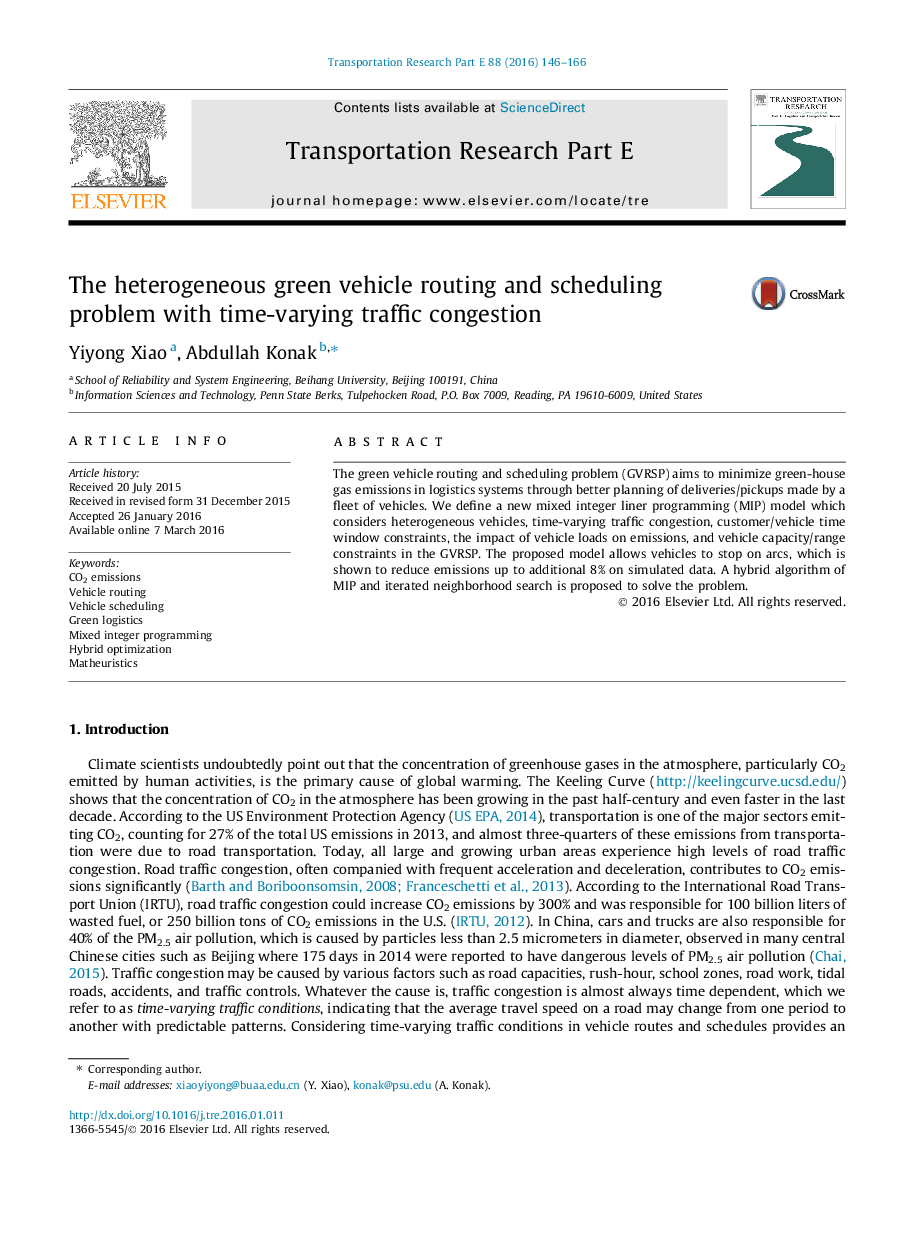| کد مقاله | کد نشریه | سال انتشار | مقاله انگلیسی | نسخه تمام متن |
|---|---|---|---|---|
| 1023000 | 1483002 | 2016 | 21 صفحه PDF | دانلود رایگان |
• A new mathematical model is proposed to reduce CO2 emissions for vehicle routing.
• A combination of exact and heuristic methods is used to solve large-sized problems.
• Considering traffic congestion in vehicle routes and schedules reduces emissions.
• Distance/time-based schedules do not always reduce emissions under traffic congestion.
• The proposed model is tested on simulated real-life cases.
The green vehicle routing and scheduling problem (GVRSP) aims to minimize green-house gas emissions in logistics systems through better planning of deliveries/pickups made by a fleet of vehicles. We define a new mixed integer liner programming (MIP) model which considers heterogeneous vehicles, time-varying traffic congestion, customer/vehicle time window constraints, the impact of vehicle loads on emissions, and vehicle capacity/range constraints in the GVRSP. The proposed model allows vehicles to stop on arcs, which is shown to reduce emissions up to additional 8% on simulated data. A hybrid algorithm of MIP and iterated neighborhood search is proposed to solve the problem.
Journal: Transportation Research Part E: Logistics and Transportation Review - Volume 88, April 2016, Pages 146–166
